We Tried Whoop For Six Months – Here’s What We Learnt
Wearable technology is helping golfers all over the world improve their games – but just how good is Whoop and what can it do for your game? The Golf Monthly team found out
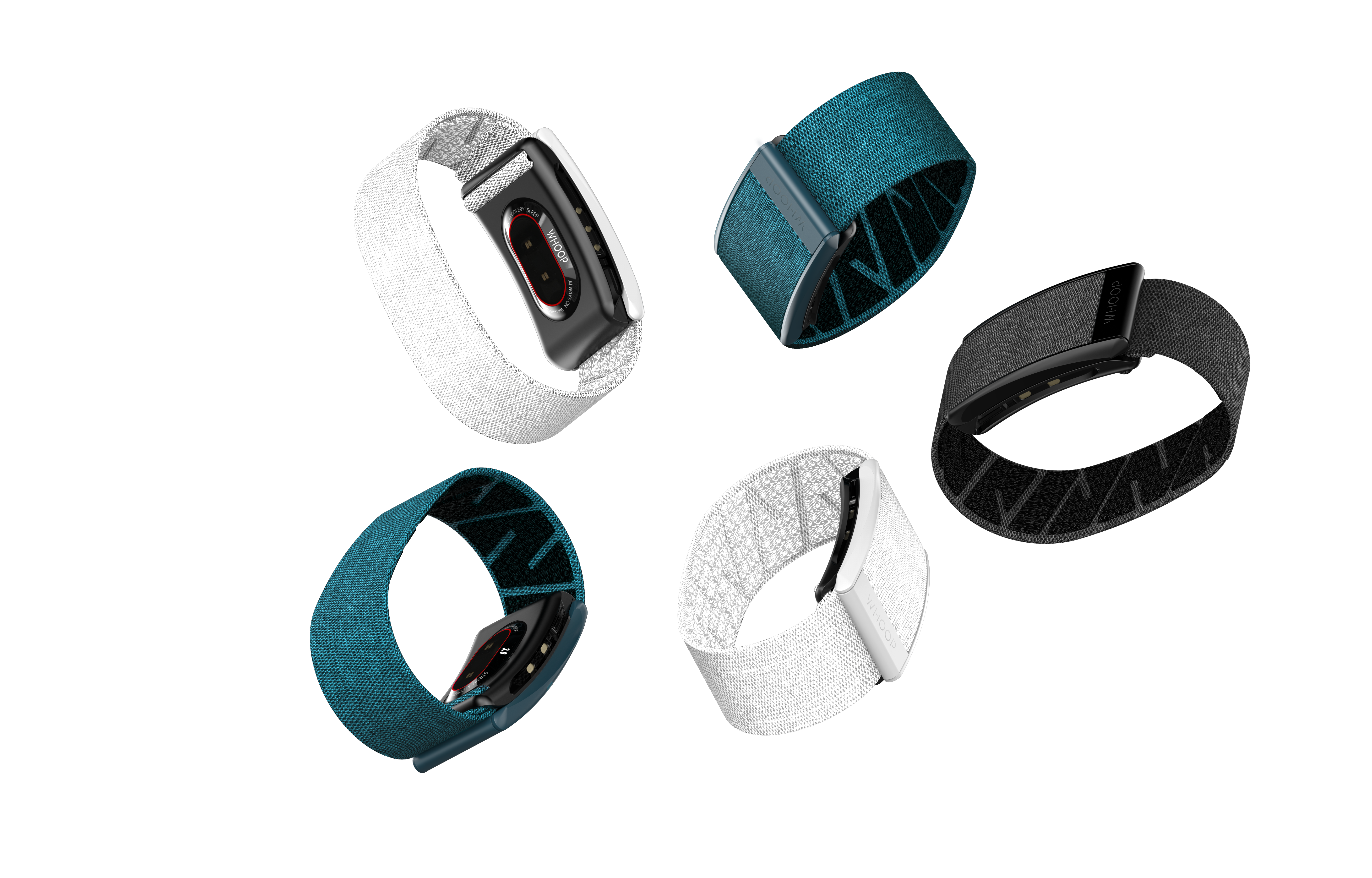
Unless you have been living in a cave for the last year – or more likely just not watching any top-level professional golf – you will have seen more and more players wearing a new, swanky band on their wrists. Whoop is a revolutionary fitness tracker that measures strain, recovery and sleep, and has been the must-have gadget for many of the world’s best sportspeople to help give them that physical edge they need.
Wearable technology is nothing new in sport and it has become something of a lifestyle choice, not only for athletes but everyday people who are looking to boost their physical capacity and, in turn, mental wellbeing.
Although seemingly relatively new to the market space, Whoop was the brainchild of Will Ahmed, a former captain of the Harvard men’s varsity squash team, who first launched the product in 2012 off the back of his desire to get the most from his workouts. Initial growth, with some fierce competition, was slow. But today, Whoop has grown into one of the most valuable-fitness wearable set-ups in the world, and last year had a reported value of $3.6billion following the launch of Whoop 4.O with its increased battery capacity.
Related read our full review of whoop 4.0
Leading players like Rory McIlroy and Justin Thomas use the detailed recordings of Whoop, while Nick Watney, who was the first PGA Tour golfer to test positive for Covid, was alerted to carrying the virus by the heart and respiratory recording from his Whoop band.
Its broad appeal comes with the detailed analysis the band delivers via an app, tracking heart rate and sleep data – with the aim to help users understand sleep patterns. But its unique-selling point ultimately comes with the band measuring certain metrics which informs users of their recovery rate, which in turn allows them to maximise their training and rest at certain points.
The company’s remit, after initially focusing on the elite athlete market, was to create a fitness tracker where normal people could have the same analytics as many of the world’s leading sportspeople. As Ahmed told Golf Monthly in an interview last year: “If you have a low recovery, which is a sign that your body is run down, you want to put less strain on your body. If you have a high recovery, you want to take on more strain. Whoop effectively coaches you across those two paradigms."
Get the Golf Monthly Newsletter
Subscribe to the Golf Monthly newsletter to stay up to date with all the latest tour news, equipment news, reviews, head-to-heads and buyer’s guides from our team of experienced experts.
It is this type of analysis, not to mention the band’s sleek and unobtrusive look, that has made some of the world’s top golfers wear Whoop, and why the product has been approved as a fitness wearable by both the PGA and LPGA Tours. It’s why the Golf Monthly team decided to get involved.
Over the last six months, eight members of the editorial team tried out Whoop to see how it could improve not just their golf but also their lifestyle. Could they see the benefits that have made Whoop such a success in the wearable technology market. Here’s what we found…

Xander Schauffele and Rory McIlroy both wear Whoop straps
Andy Wright
Staff Writer
Age: 30
Handicap: 1
Play golf once/twice a week
Exercise: Walking
As someone eager to learn and find ways to do things better, I was really excited to try Whoop, especially as I had heard and read so many positive things about it. I assumed it was mainly a tool to help users track sleep and recovery, as well as inform on your exercise. A part of me also hoped this would give me a nudge to do more of the latter.
Having been a little overwhelmed at first, through more use I’ve really been enjoying Whoop. It’s taught me the importance of getting good sleep as well as developing a consistent sleeping pattern. I’ve also been very surprised at just how strenuous some activities are. Hitting golf balls, whether at the range or on the course, for example, burns a lot more calories than I could have imagined.
The weekly and monthly performance reports do a great job of providing recommendations based on my journal entries. I know if I eat fairly late in the day and spend too long on my phone in bed, I’m unlikely to wake up to a green recovery score. However, stress is something I struggle with, so sticking to the recommended behaviours can be a challenge.
The great thing about using Whoop as part of a team as well is that it builds a sense of competition. Although I rarely top the lists for daily, weekly or monthly strain, it is a constant goal and that often gets me out the door when I normally wouldn’t.
Verdict
It does take a while to get used to but if I was giving someone advice, I’d recommend sticking with it as it really can help users improve habits and find out what works for them.

Justin Thomas relied on Whoop's recovery data to ensure his body was able to manage his workload in the build-up to his win at last year's Players Championship
Sam Tremlett
Senior Staff Writer
Age: 28
Handicap: 5
Play golf a couple of times a month
Exercise: Body workouts & yoga five times a week
The main reason I was so interested in using Whoop was to give me information on how I sleep. I have always felt like I am a bad sleeper and this was a way of producing some clear statistics that would either prove or disprove how I felt.
As such I opened myself up to the entire process and I did feel like Whoop could play a role in actually changing how I felt in my mind. There were times I felt like I had slept badly and yet the data would tell me how much light, REM and deep sleep I got which would make me feel a lot better. The app also gives a recovery percentage too, which changed my mentality going into some work days.
The other main benefit I found with the strap is its simplicity. Aside from tapping it to see how much battery is left, the strap is not distracting at all because the sensors just go about their business behind the scenes. Then you can look at your stats at your own leisure on the app. Speaking of the app, I did think it took a bit of time to get used to in terms of functionality.
The strap itself is comfortable most of the time but like with a watch, it does feel good to take it off every once in a while. The different straps and colours also make it a very desirable and cool product.
Verdict
Whoop is a very smart piece of kit that looks great and doesn’t feel bulky or uncomfortable on your wrist. It delivers an incredible amount of data that both alerts you to certain areas of your lifestyle whilst challenging you to improve.
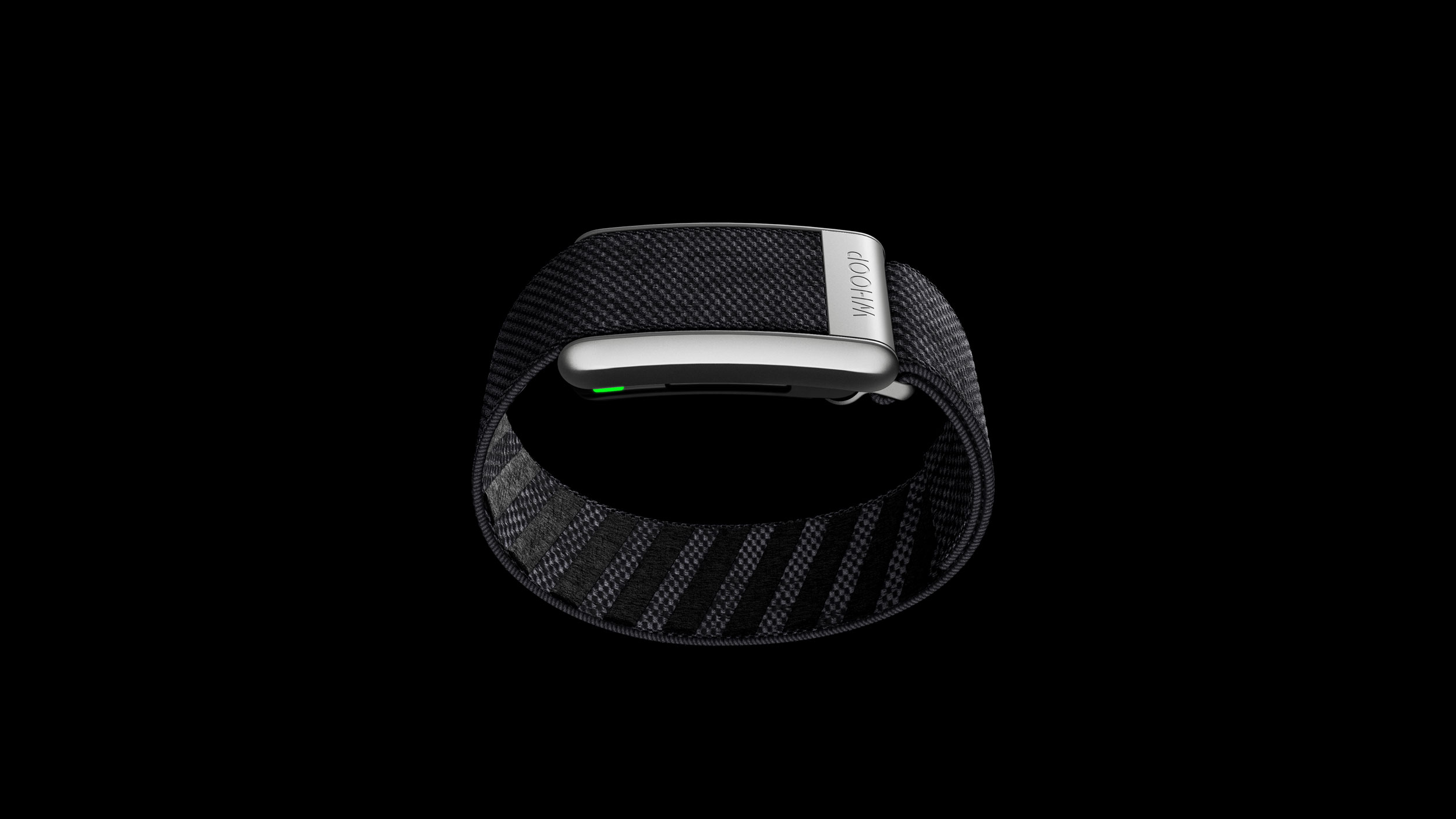
The sleek design of the Whoop 4.0
Neil Tappin
Digital Editor
Age: 40
Handicap: 3
Play golf once a week
Exercise: Running three times a week
For the first few months of wearing Whoop I was recovering from a torn hamstring and I originally thought I’d use it to track my return to physical fitness but initially, the more interesting insights were around my lifestyle. Seeing how small changes (like eating earlier in the evening and reading before bed) have affected my recovery score has been the biggest eye-opener.
The data in the app is well-laid out, which makes it easy to follow and understand while the strap itself is unintrusive and is also very comfortable, while the mixture of colour options is another smart addition.
Whoop did reveal a few issues that perhaps added to my stress levels and reminded me I needed to address certain things, but it was very helpful in reminding me about getting into good fitness habits, while the app delivered stacks of information that was easy to follow and adapt to.
Verdict
The sleep tracking is excellent and the daily recovery score does seem to tally with how I feel. For me, as someone who isn’t a professional athlete, the jury is still out on how useful it will be in the long term.
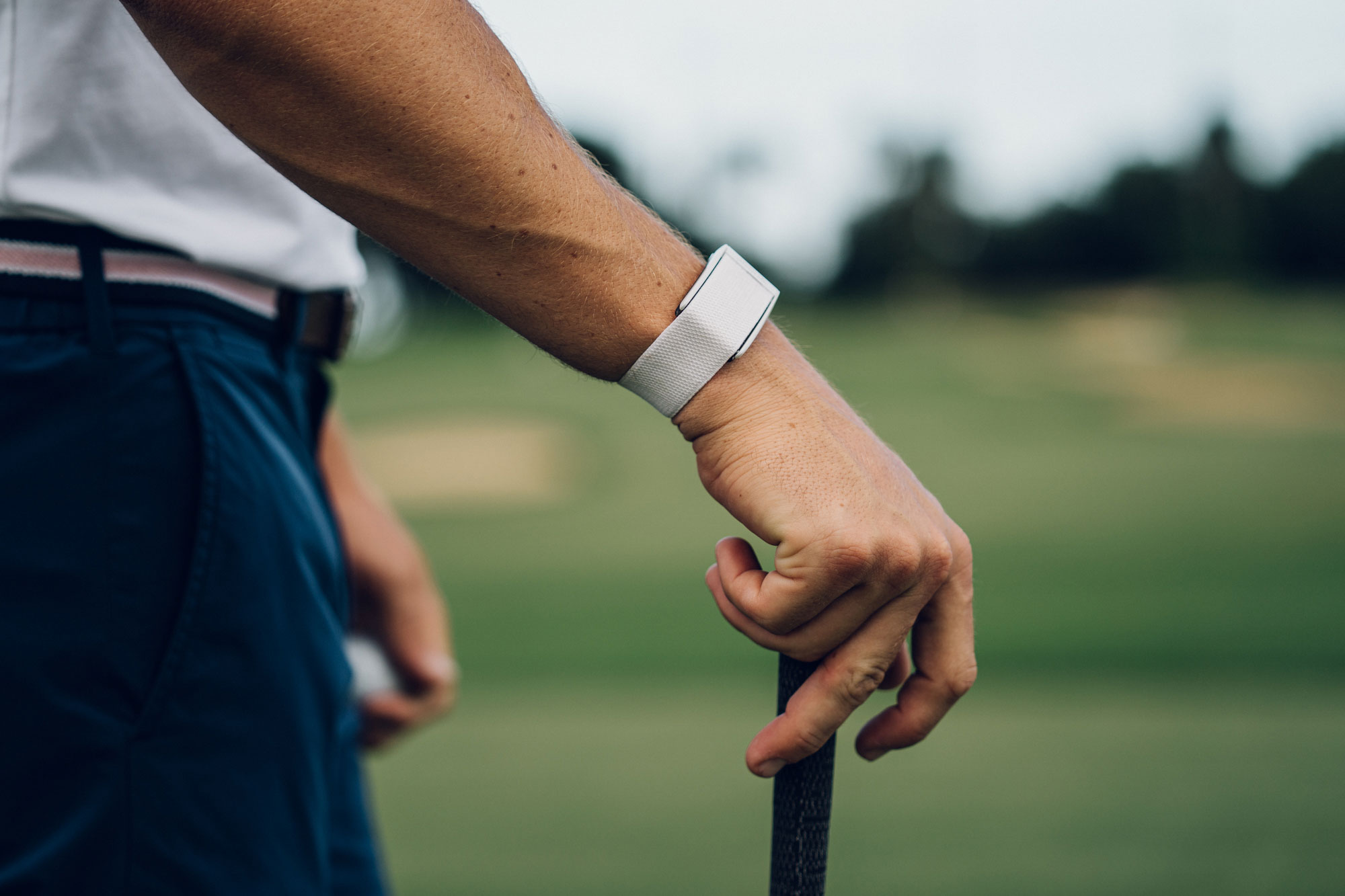
The band is unobstrusive when playing
Nick Bonfield
Content Editor
Age: 33
Handicap: 20
Play golf once a month
Exercise: I run and work out three times a week
I must admit I was indifferent to the idea of trying Whoop – I have a natural scepticism when it comes to this sort of technology and I thought I'd be in a position where I felt good but a machine was telling me I shouldn't, or vice versa. But, generally, how you feel is consistent with the data and there's no denying that Whoop is a clever and feature-packed piece of equipment with a number of benefits.
The two realms where it makes the biggest difference are sleep and exercise. I've always struggled with sleep, but having a daily score and being able to compare that to others in the Golf Monthly group has shown me it's perhaps not as bad as I thought.
Plus, Sleep Coach functionality tells you how long you should spend in bed, when you should go to sleep and what your deficit is, and the comprehensive journal you fill out each morning can help you identify trends when it comes to sleep or lack of. With exercise, knowing how much strain your body is primed to take on gives you the impetus to push yourself further.
Verdict
Whoop is undoubtedly a smart piece of kit with a raft of useful performance features, but moving forward, I’m not sure what else it can offer that it hasn’t already. I’ve really enjoyed using it, but I think I’ve reached the ceiling.

Whoop is more than your standard fitness tracker – giving detailed feedback to optimise performance
Alex Narey
Content Editor
Age: 46
Handicap: 13
Play golf once a week
Exercise: Cycling, walking the dog
Before I started wearing my Whoop in August, I had obviously heard positive reviews about its functionality – but had assumed it gave the standard feedback like so many other fitness trackers. Historically I haven’t been a fan of fitness trackers; I think too many people wear them and assume that just because they are doing 'more' means they are living a healthier lifestyle. They aren't. So, there was a degree of scepticism.
The information recorded on Whoop is incredibly detailed, but you must work with it. Due to my own personal circumstances, I have received some alarming realities where I need to change my lifestyle. But hopefully over the coming months, with added focus on work-life balance, I am hoping to see notable improvements. My sleep recordings have been demoralising, but pretty much as I expected, while the sleep reminders are helpful.
The band itself is comfortable and unintrusive. I quite often take my watch off, especially when I am working and always take it off in the shower. But the Whoop is pretty much always on my wrist and doesn’t irritate in any way. My phone battery doesn’t seem to be affected too much, while the Whoop battery itself is long-lasting and charges quickly. The Whoop live function is very impressive.
Verdict
Very impressive, with detailed feedback. The sleep analysis is particularly strong with some revealing statistics, and as a Strava user I was impressed it synced so smoothly with my workouts.

Nick Watney tested positive for Covid after being alerted to his heart and respiratory reading from his Whoop band
Dan Parker
Staff Writer
Age: 25
Handicap: 9.5
Play golf once a week at a minimum
Exercise: Nothing!
I was looking forward to trying the Whoop band after hearing so much about it from those using it on the PGA Tour. I didn’t really know what to expect from using it, but I was most excited about how it would track and analyse my sleep.
Indeed it has been the sleep-tracking functionality that I have found most useful, enjoyable and informative. It’s helped mostly with my circadian rhythm and I have found myself going to bed and waking up at similar times across weekdays and feeling all the fresher for it.
Having a device track your sleep so accurately over a long period of time has certainly made me more aware of my sleep patterns and how to improve them. However, I have found the other functionalities of Whoop to be less useful. I feel the recovery ‘scores’ don’t really apply to me as I do very little in the way of exercise and rarely need to ‘perform’ physically during the day.
Apart from plenty of golf and the occasional walk, my physical activity is fairly limited, so I have tended to ignore the recovery scores I get at the start of each day. I also find it frustrating that it doesn’t track something as simple as a step count! It’s attached to my wrist 24 hours a day so surely this could be something it can keep track of.
Verdict
Overall, a very smart piece of technology and the sleep data is very impressive and a real game-changer. But due to my aforementioned lack of exercise, I like to keep track of my steps and it’s frustrating that the Whoop doesn’t do this for me.
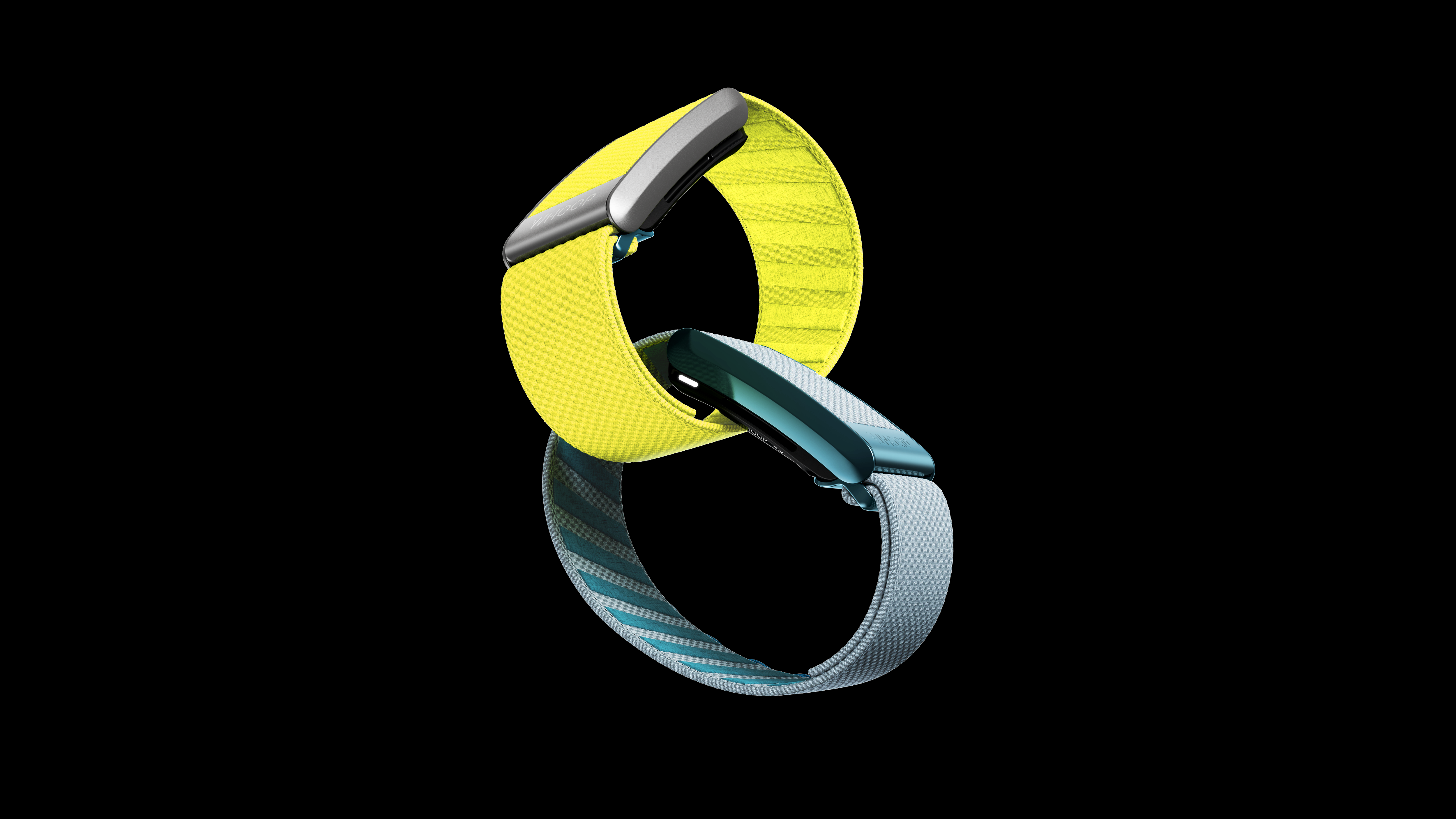
Mix and match the colours of the Whoop band to suit your taste
Michael Weston
Contributing Writer
Age: 41
Handicap 6.4
Play golf once a week
Exercise: Occasional runner
I was keen to try Whoop, especially having recently turned 40, at which point I have become a lot more conscious of what I eat and drink. My hope was that it would give me the motivation I needed to do more exercise, as I'd heard how it could help get the competitive juices flowing, especially if you joined a group – which I did – and started comparing myself against friends.
Unfortunately I've yet to get the full use from it, because I'm not getting anywhere near as much exercise as I'd like to. If you're the type of person who lacks a bit of discipline and willpower, it's probably not worthwhile investing in Whoop; you have to be exercising, otherwise it's a rather pointless purchase.
In terms of the device itself, I have a fairly slim wrist, so it does look a little chunky. The only other reservation I have is that despite all the data it can provide, it does mean looking at an app. It's a personal thing, but these days I'm actively looking to spend less time looking at my phone. It would be pretty useful without an app, but this is something to bear in mind if you already have a lot going on on your phone.
Verdict
I do believe Whoop – and other fitness trackers – are obviously most beneficial to those who are pushing themselves in terms of their fitness. The recovery/strain data would be very useful, but sadly I’m not quite as active as I want to be at the moment and so didn’t feel I was getting the best out of the device.
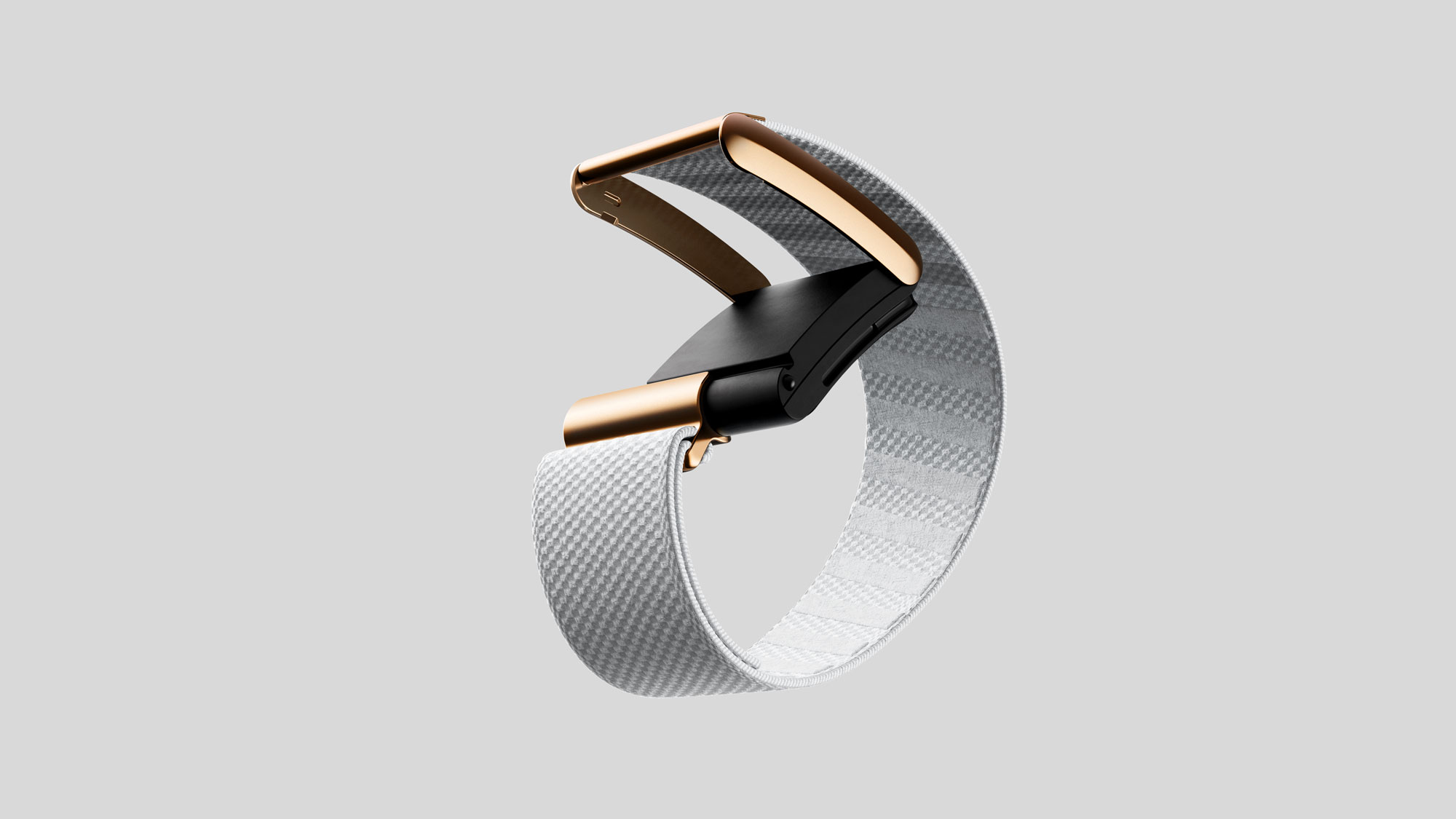
The clasp is easy to open and locks securely
Elliott Heath
Senior Staff Writer
Age: 26
Handicap: 4.7
Play golf at least once a week
Exercise: Occasionally go to the gym
I was expecting to get an in-depth analysis of my sleep and hoped it would help me lead a healthier lifestyle. Whoop has certainly helped with that for the most part as I definitely do see the negative implications from alcohol. It has definitely helped me drink less and I never drink at home now.
It is fantastic to know when your body has recovered. However, I am not overly into fitness so sometimes struggle to find the motivation even though Whoop is telling me that I am recovered and primed for strain.
Most of my strain comes from playing golf and the occasional gym visit, although my highest-strain day was two 15-minute sessions of laser quest, which was quite interesting and amusing.
I find it interesting that I seem to burn more calories than most of the Golf Monthly team. I assume this is because I am the most overweight – it would be good if Whoop told me more about how I am burning calories.
I like how it looks and I find it comfortable to wear. I would probably choose different colours, but personally can’t really justify the prices. If they were £5-£10 on Amazon I would customise it, but I think £34.99 is a bit much for me.
Verdict
Whoop offers plenty of feedback and data but there is no doubt it is more beneficial to those who push themselves physically. It does drain my battery on my phone and the app does tend to lose connectivity from time to time. But all in all it’s very impressive
How do you get on Whoop?
Visit whoop.com to sign up for a membership that is subscription based, the longer you commit the lower the monthly cost.
-
 9 Things Rory McIlroy Still Has Left To Achieve In His Career
9 Things Rory McIlroy Still Has Left To Achieve In His CareerAfter becoming one of just six players ever to complete the career Grand Slam, what else could Rory McIlroy realistically achieve before retirement?
By Jonny Leighfield
-
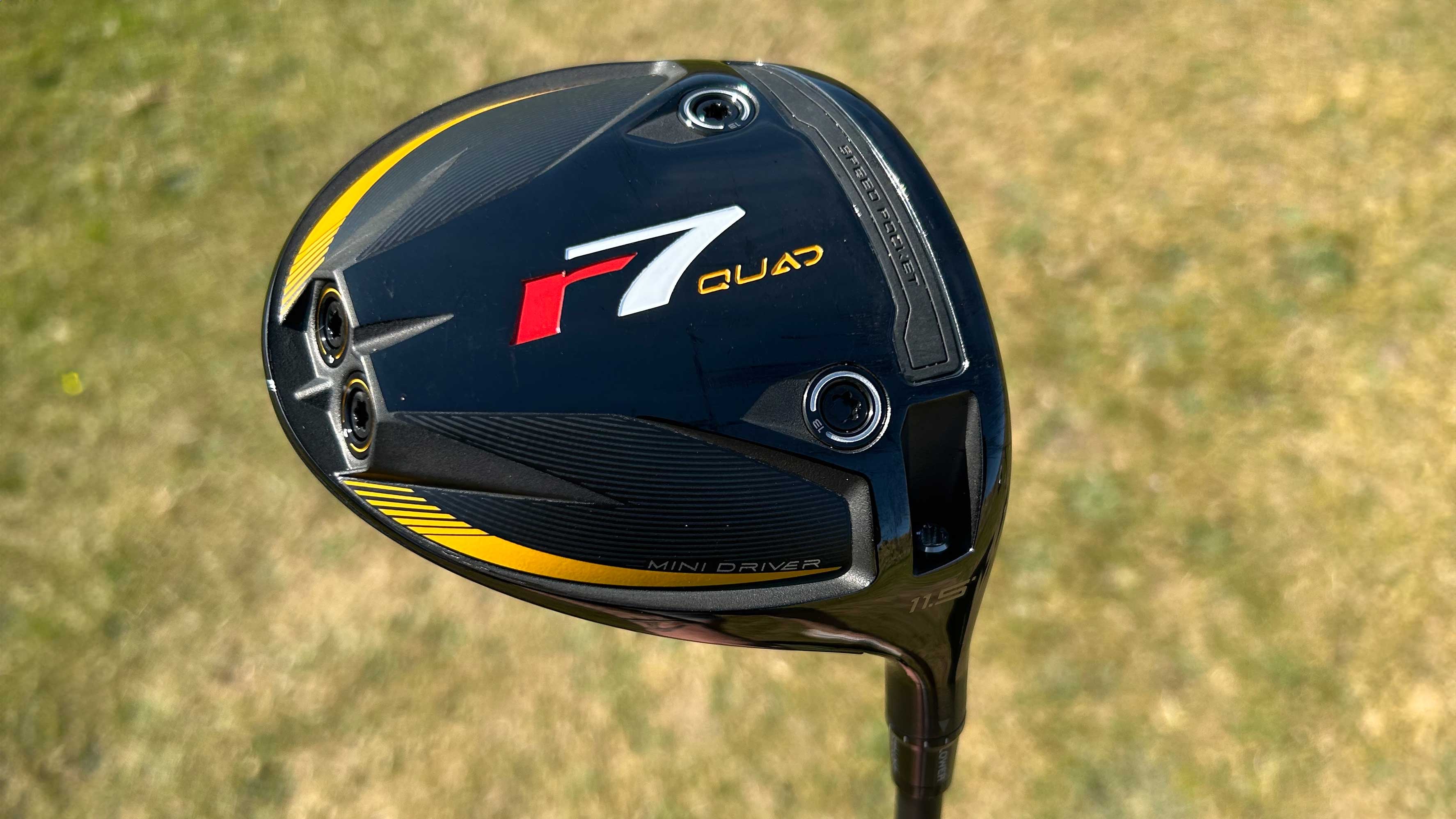 3 Reasons To Add A Mini Driver To Your Golf Bag
3 Reasons To Add A Mini Driver To Your Golf BagThe mini-driver has been popping up in more and more bags on professional tours all around the world in recent months. Could you be missing out if you haven't tried one yet?
By Joe Ferguson